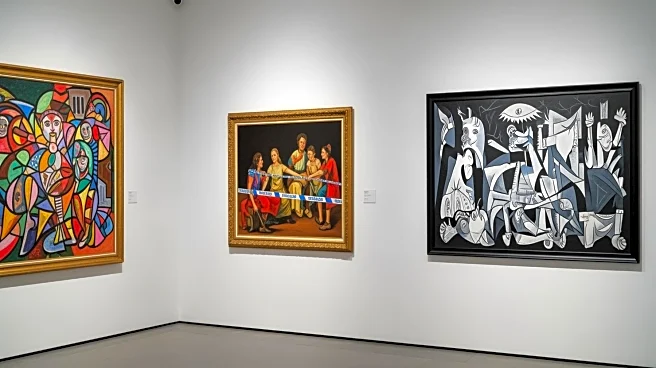What's Happening?
German authorities have dismantled an international art forgery ring attempting to sell counterfeit works attributed to renowned artists such as Pablo Picasso and Rembrandt. The operation was led by a 77-year-old
man from Bavaria, with assistance from ten accomplices. The group attempted to sell fake artworks, including a supposed Picasso portrait and a Rembrandt painting, for millions of dollars. The investigation revealed that the forgeries were supported by counterfeit expert reports. A coordinated police operation across Germany, Switzerland, and Lichtenstein led to the seizure of numerous suspected forgeries.
Why It's Important?
This case highlights the ongoing challenges in the art world regarding authenticity and the potential for significant financial losses due to art fraud. The incident underscores the need for rigorous authentication processes and the role of law enforcement in protecting the integrity of the art market. Collectors and investors are reminded of the risks associated with high-value art transactions and the importance of due diligence. The case also illustrates the international nature of art crime and the necessity for cross-border cooperation in tackling such issues.
What's Next?
The seized artworks will undergo expert analysis to confirm their authenticity. Legal proceedings are likely to follow against those involved in the forgery ring. The case may prompt increased scrutiny and regulatory measures within the art market to prevent similar frauds. Art institutions and collectors may also enhance their authentication protocols to safeguard against future incidents.













